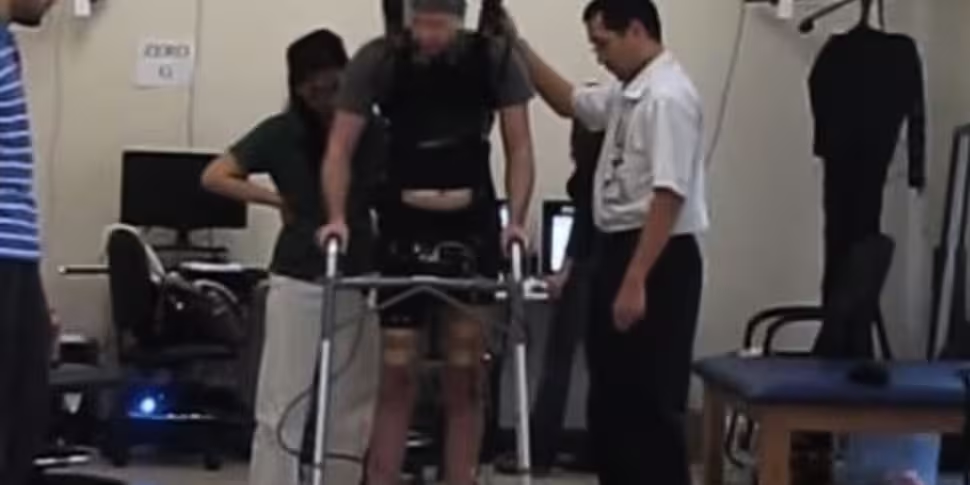A paralysed man has made medical history by walking again after doctors reconnected brain signals to his legs.
Adam Fritz, 26, managed to walk nearly four metres without help and with what researchers described as "a high level of control".
Five years ago the American was left paralysed after he was commuting on his motorbike and a table fell from a truck in front, hitting him and sending him flying.
But doctors bypassed his damaged nerves by transmitting signals from his brain to electrodes around his knees.
He had to undergo mental training to reactivate his brain's ability to walk and then had months of physical training to prepare his leg muscles.
After 19 unsuccessful attempts, he managed to walk 3.66m. He is still a long way from being able to walk easily alone but, nevertheless, the achievement has been hailed as a medical milestone.
The nerves of the spinal cord are not able to regenerate after they have been severed, so such damage usually means irreversible and lifelong paralysis.
Neurologist Dr An Do, of the University of California, said: "Even after years of paralysis the brain can still generate robust brain waves that can be harnessed to enable basic walking.
"We showed you can restore intuitive, brain-controlled walking after a complete spinal cord injury."
Dr Zoran Nenadic, also involved in the study, said: "We've been able to, for the first time, allow a person to walk hands-free without pressing buttons. It's a short distance, of course, but in terms of significance, it's a very exciting step."
There have been a few cases of people walking with the help of robotic limbs but this method, revealed in the Journal of NeuroEngineering and Rehabilitation, would mean patients would not need mechanical help.
Scientists behind the development say they also believe it could be possible to send brainwaves in the other direction - from the legs to the brain, meaning the person would be able to feel their legs.
And, for anyone finding themselves in the same situation as Mr Fritz was a few years ago, he has this advice: "Never give up hope, and get involved.
"If there are scientific communities that need participants then get involved. Put yourself out there and really try. That's what I did: I had no idea what was going on - I just signed up for it ad look what happened."









